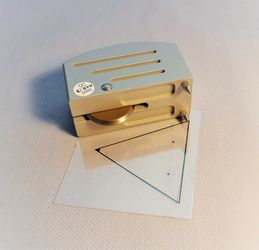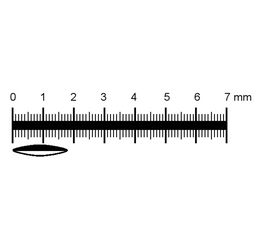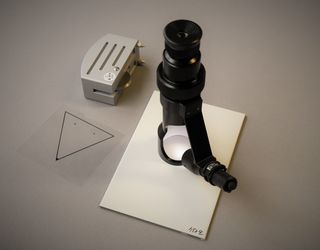The Buchholz hardness test is used to determine the indentation resistance aB of polymeric coating materials (such as varnishes).
To determine the Buchholz hardness, the hardness tester is placed on the horizontal surface for 30 s. In this position the indenter, a circular knife, leaves an indentation.
The length of the indentation is measured with a microscope (20× magnification). Based on this length, a comparison table is used to determine the indentation resistance aB. A more comprehensive examination of the indentation is possible, for example, using a 3D microscope.
This method can only be used for plastically deformable coatings such as paints, varnishes and fillers.
The test is carried out according to DIN EN ISO 2815.
⇒ Please do not hesitate to contact us for questions and further information about our R&D and services offered. |
Overview of our Technical Equipment
- 3D Microscope
- Atomic Force Microscopy
- Buchholz Hardness Test
- Coater
- Coating Thickness Measurement
- Colorimeter & Spectrophotometer
- Cross Cutting Test
- Drop Ball Impact Test
- Environmental Test Engineering
- FT-IR (ATR) Spectroscopy
- Gloss Level Analysis
- Grind Gages (Grindometer)
- Irradiation Technology
- Measurement of Corrosion Current
- Mechanochemical Surface Treatment
- Mandrel Bending Test
- Palamat
- Panel Press
- Plastics Technology
- Pneumatic Hot-Melt Dispenser
- Potentiostat / Galvanostat
- Powder Coating
- Raman Spectroscopy
- Sample Preparation Technique
- Scratch & Scribing Tools
- Stirring & Mixing Technique
- TERA Ohmmeter
- Thermal Analysis
- Ultrasonic Testing System
- Universal Testing Machines
Manufacturer:
BYK Gardner GmbH
Model:
PH - 5825

Dr. Joerg Leuthaeusser
Head of Department
Primer and Chemical Surface Treatment
e-mail
Phone: +49 3641 2825 48







